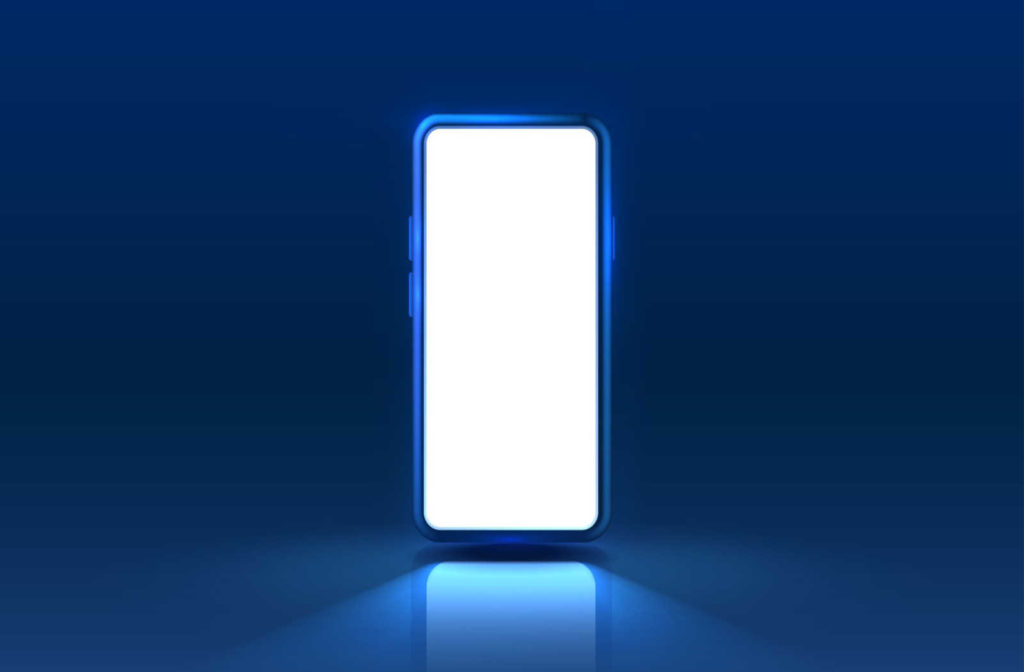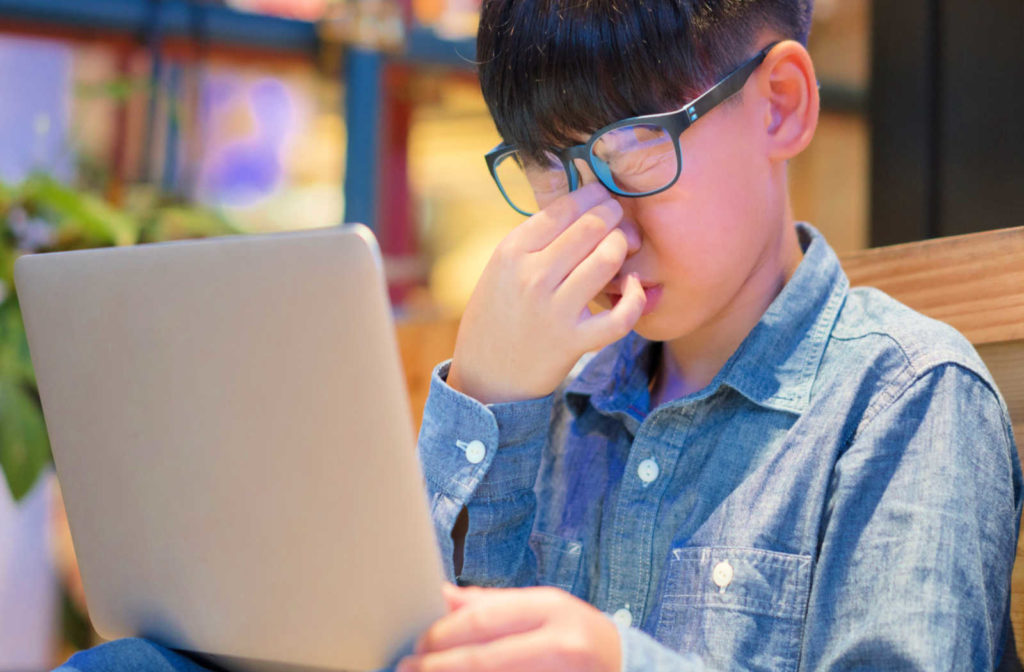In our modern world, more people than ever rely on technology to get their work done. Whether from home or at the office, many careers require us to be in close quarters with computer, phone or tablet screens, often causing headaches and eye strain.
Whether you’re equipped with regular prescription eyeglasses or not, proximity to the screens on our devices can lead to digital eye strain and overexposure to blue light. One trend gaining popularity to combat this is blue light lenses.
Human eyes can detect blue light, sometimes referred to as high-energy visible (HEV) light, in the visible light spectrum. In general, the shorter the wavelength, the higher the energy is for both visible and non-visible light, which are measured in nanometers (nm). Because blue light has a shorter wavelength than other colours, it has higher energy output.
Blue light isn’t as efficiently filtered by the eyes as other types of light, which allows more of it to reach the retina.
Our exposure to blue light from digital devices is of special concern because of:
- Our close proximity to screens
- The amount of time we spend on devices
- The impact of using devices every day
The retail market’s answer to the concern of blue light is the creation of blue light lenses. Lenses specifically designed with a blue light filter claim to relieve the symptoms of blue light exposure such as:
- Sleep disruption
- Tired eyes
- Headaches
- Reduced productivity or concentration
- Dry eye disease
Dry Eye Disease
Dry eye disease affects one in five people. When tears are produced insufficiently or evaporate too quickly, dry eyes may develop. One or both eyes can be affected. Potential signs include:
- Eye irritation
- Blurred vision
- Light sensitivity
- A stinging or burning sensation in the eyes
- A sensation of grittiness in the eyes
- Stringy mucus in or around the eyes
More severe cases may need prescription medicine, whereas milder cases may respond to over-the-counter therapies. Rarely, a person may need surgery to address specific dry eye causes.
There are two primary types of dry eye disease that can affect you individually or at the same time.
Aqueous deficiency
Reduced aqueous output from the lacrimal glands leads to an aqueous deficit. Only a tenth of dry eye disease is caused by it. The aqueous deficit can be further divided into cases either related or non-related to Sjögren’s syndrome.
Evaporative
A deficient tear film lipid layer, which accelerates tear evaporation, is the cause of evaporative dry eye. Over 85% of dry eye cases have meibomian gland dysfunction.
Meibomian gland dysfunction has both a cause and an effect known as blepharitis, or inflammation of the lid margin. Dry eye disease is often a result of blepharitis because it is believed that a lack of tears affects one’s ability to fight against infection.
Multiple factors could be to blame for either type of dry eyes including:
- Age
- Gender, females are almost twice as likely to develop dry eye as men.
- Eye contact use
- Diet

Is Blue Light the Problem?
Blue light lenses are advertised as the solution for the symptoms of blue light exposure, but is blue light the main culprit? There is no scientific proof that blue light from digital devices harms your eyes.
Digital eye strain is most likely the cause of the discomfort some people experience after staring at their devices. Most people blink less when staring at screens, which results in dry eyes and eye strain.
To completely ignore screens is unrealistic, especially in today’s world. Change how you use digital devices instead of trying to treat your dry, tired eyes with blue light glasses.
Dry eye disease can also be a result of underlying health issues as many medical conditions inhibit your body’s ability to produce tears including:
- Lupus
- Scleroderma
- Graft vs. host disease
- Sarcoidosis
- Thyroid disorders
The best way to take initiative and counteract the symptoms of dry eye disease begins with you. Attempt to blink more often. Take regular breaks to allow your eyes to rest. Dim the lights around you while adjusting the screen’s contrast and brightness.
If you’re still experiencing symptoms of dry eyes after making these lifestyle adjustments, consider other therapies available at Eye Care Plus.
Dry Eye Therapy
Fortunately, there are numerous dry eye treatments available, ranging from prescription drugs to simple surgical procedures. Intense Pulse Light (IPL) and TearCare are two of the efficient in-office treatments Eye Care Plus has available.
TearCare
When used in conjunction with the manual expression of the meibomian glands, the TearCare System is designed for the application of localized heat therapy in adult patients with evaporative dry eye disease caused by meibomian gland dysfunction.
IPL
Dry eye can be treated with intense pulsed light therapy, which employs a defined spectrum of light. The main factor of dry eye disease, meibomian gland blockages, is helped by the light.
IPL clears obstructions so that your eyes can receive the oils they need, which raises moisture levels and lessens the symptoms of dry eyesVisit our eyeSPA page to learn about all of the dry eye therapies we have available at Eye Care Plus, or book an appointment with our Amarillo eye doctors today!



